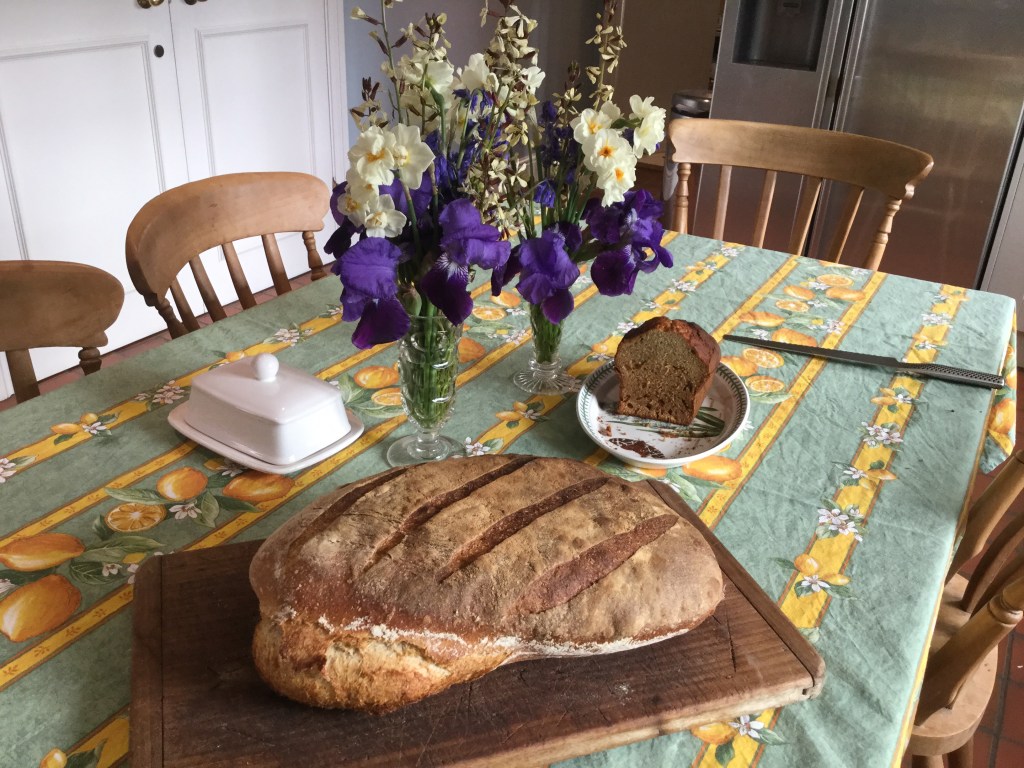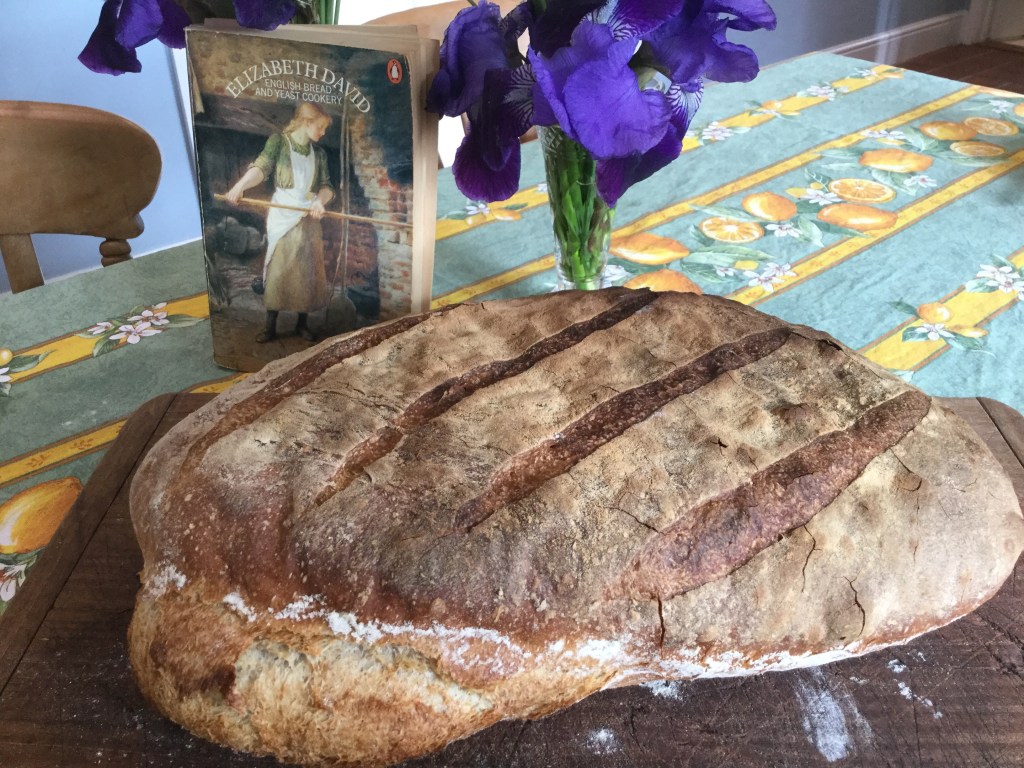Even at the very start of the Covid-19 lockdown, some hazily distant thirty days ago, all the flour and yeast had vanished from the supermarket shelves. Along with loo rolls, pasta and tinned tomatoes. Now those last three store-cupboard staples are starting to make fleeting guest appearances in our shops, and can be snapped up by the very enthusiastic early-bird shopper. Very occasionally you might also come across a solitary bag of plain flour too, but blink and you will miss it. But for over a month, we have had no yeast. Is the entire population now baking their own bread? It would appear so! But what happens when the yeast runs out?
Everyone is now making sourdough bread from scratch!
To get a sourdough starter to grow from nothing more than flour, water and airborne yeasts takes around four weeks and could use as much as 4lbs of flour! This involves making a slurry of flour and water in a big bucket, then allowing it to ferment for two weeks, and then a fortnight of constant feeding and watering whilst pouring away the unwanted excess which will build up over this time. This might explain where a lot of the flour has already gone.
Being a very keen home baker, as those of you who have managed successfully to navigate through my blog will have found out,my own larder has always been well-stocked with strong bread flour and yeast. When my son and daughter, and their respective partners, made the journey back home to their country roots here, they asked what they could bring with them. I said flour and yeast. They managed one bag of bread flour and 4 sachets of instant yeast. They are but a distant memory now. With the last but one teaspoon of instant yeast I took the very risky decision to manufacture my own sourdough starter. Well, the results speak for themselves!

Success! And I took a shortcut of my own making.
This is how I did it.
1. Activate one teaspoon of dried yeast in some warm water with half a teaspoon of sugar.
2. When foamy and bubbly after around 15 minutes, whisk it into about 4 ounces of organic strong bread flour along with around quarter of a pint of non-chlorinated water. It is important to use organic flour if you can get it, but it will work with regular strong bread flour too, although not so well. White or brown is fine. The water must not be heavily chlorinated though, so use some from a previously boiled and now cool kettle, or from a charcoal fridge filter. Put the mixture into a large kilner jar, but do not fully close the lid or it will explode!
3. Leave it loosely covered at room temperature. That same day, or around twelve hours later, stir in another couple of ounces of flour. Repeat this feeding of the sourdough starter twice a day for the next four days, adding a little more water each time. After five days you should have something with which you can bake bread with. You will need to have put it in quite a large Kilner jar to allow for its continual growth. When you taste it, it should be pleasantly fizzy and look a little like this.

When it comes to baking, use around 2 lbs of flour, water and salt to make one huge delicious loaf like I have here. Take out one quarter of the sourdough starter, feed and water it like before, and put it in the fridge. There it can stay for ever, but you must feed and water it at least once a week, and remove any excess for baking or to give away to friends and neighbours .
First thing then is to add half the flour, around 1lb, to three quarters of the sourdough starter. Add enough warm water to then mix well into a runny dough. You can do this in a machine with a dough hook, or in a huge bowl with a large spoon and your hands. Do not overmix, around 5 minutes is fine. Cover and leave at room temperature for 12 hours.
Next, add the remaining one pound of flour and two tablespoons of salt. Mix well, and add sufficient water so that you get a soft elastic bread dough which is more like a very thick batter, and just too soft to knead on the worktop like normal bread dough. Use a machine with a dough hook and knead for no more than 10 minutes on low speed, or use your fingertips in a large bowl, and work the dough in a similar fashion until well amalgamated and you can see the gluten becoming stretchy.
Cover the dough in the bowl with clingfilm and put in the fridge for eight hours. Then get a baking sheet lined with baking parchment and lightly floured. Take out the dough which should have risen spectacularly by now! Flour a worktop well, and tip out the dough onto it, slapping it around a couple of times. Then fashion it into an oblong rustic loaf shape by continually tucking the ends and sides under, and leaving a nice smooth domed top. Place it on the baking sheet, flour the top lightly and cover with a teatowel, leaving in a warm place for around 45 minutes. Heat the oven to 230 C and JUST before putting the loaf in to bake, slash the top of the loaf diagonally with a razor blade or very sharp knife. Put quickly in to the hot oven, (or top of top oven of the Aga which is totally ideal for this!) but remember to leave enough space above it because it will rise a lot! Bake for around 30 to 45 minutes depending on how hot your oven is, but until it is well browned and hollow. I usually turn mine over for the last few minutes to brown the bottom.
If you choose to use bread tins, which should be really well greased and floured, then turn the bread out of the tin for the last few minutes to really crisp up the bottom and sides.
Now, you may well ask, having successfully solved the problem of no dried yeast, what to do if you can’t find strong bread flour for baking?
Well, my next baking experiment will be for a French Baguette. On reading Elizabeth David’s excellent 1977 English Bread and Yeast Cookery, I am going to try using Soft Plain Flour with little gluten, but mixed with 20% Strong Bread Flour to see if I can replicate the typical French flour used for baking that she seems to suggest may work!



Everyone is getting super creative in the kitchen. I’ve never seen so many bread recipes. The worry is, that well all come out of isolation looking like tree trunks. 🤭
LikeLike